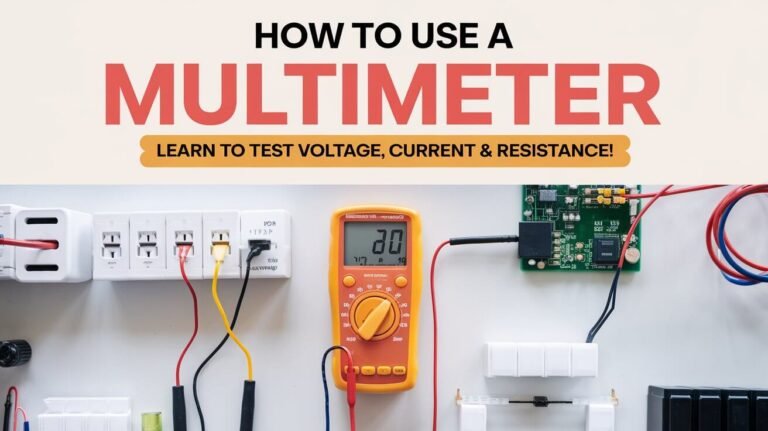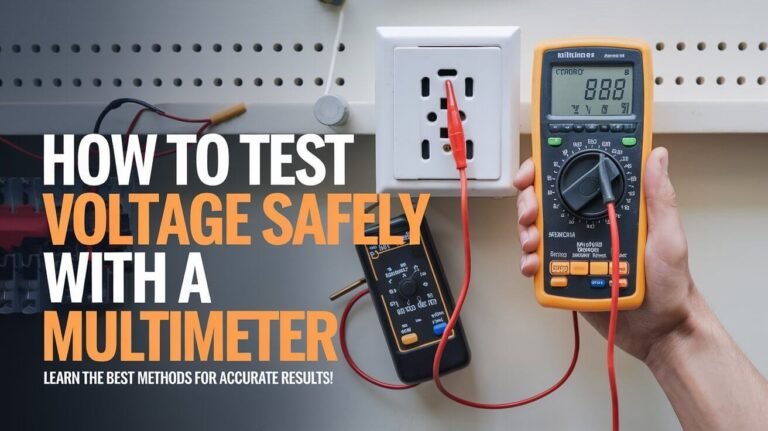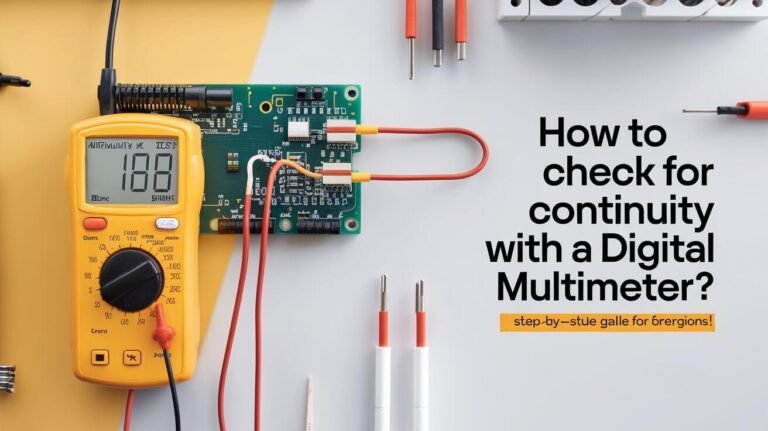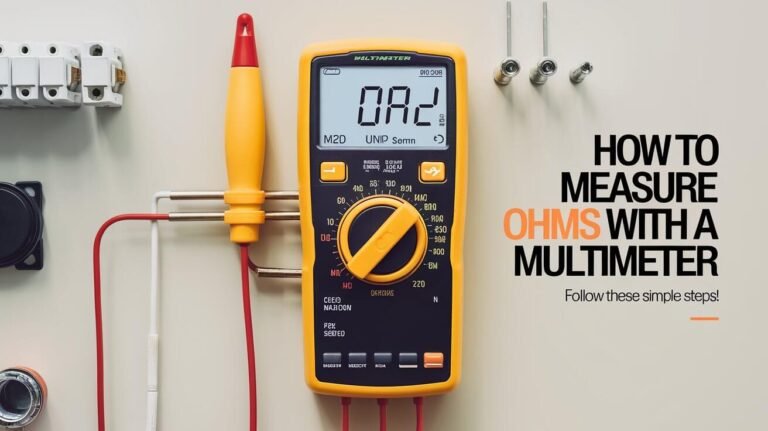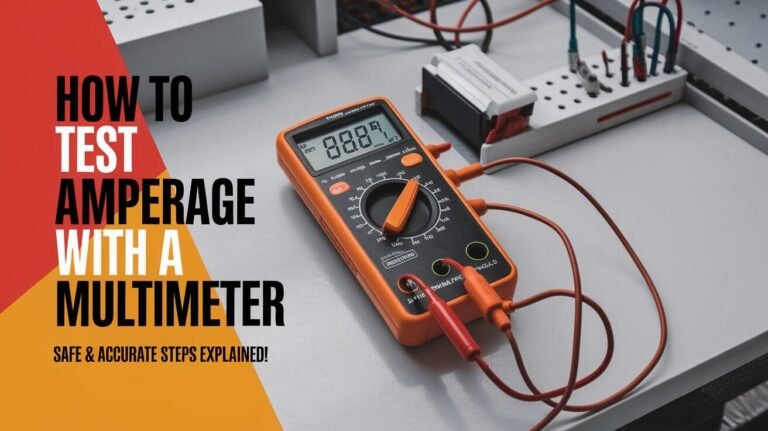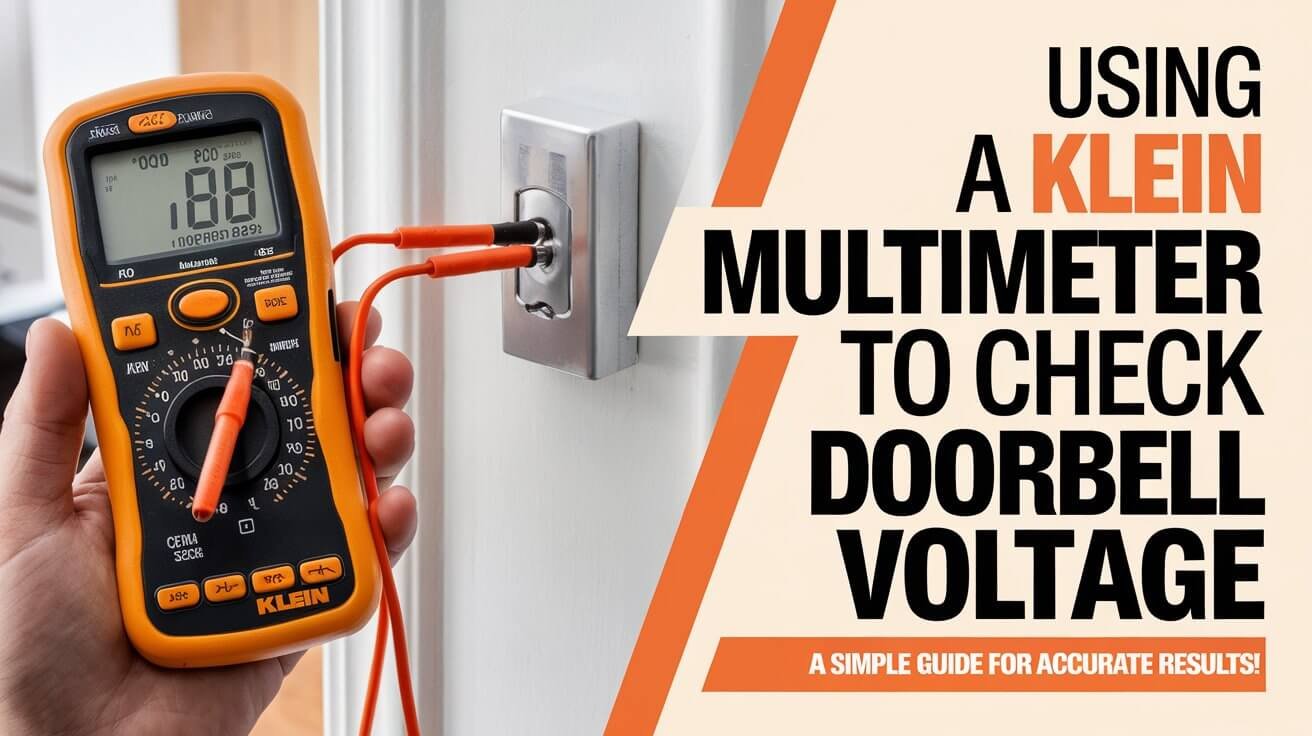
Having a working doorbell is key for a warm welcome and safe entry. When our doorbells stop working or act strangely, a Klein Tools multimeter can help. It lets you check the voltage and fix any problems, making sure your doorbell works right.
Doorbell transformers usually cut the household voltage down to 10-24V. This is what most traditional doorbells need. But, smart doorbells might need 16-30V to work well. So, it’s important to measure the voltage to find and fix any issues.
What Makes Klein Multimeters Perfect for Doorbell Testing
At the heart of any successful doorbell troubleshooting is a reliable multimeter. Klein Tools, known for their high-quality electrical testing equipment, offer a range of multimeters perfect for doorbell voltage assessment. These precision instruments are designed with features that make them indispensable for homeowners and professionals alike when it comes to ensuring the proper functioning of doorbell systems.
Key Features of Klein Multimeters
Klein multimeters boast a host of features that cater to the needs of doorbell voltage testing. Their AC voltage measurement capabilities are essential for accurately evaluating doorbell transformer output, a critical step in identifying potential issues. These multimeters are also known for their durability, with the ability to withstand drops from heights of up to 6 feet without sustaining damage.
Another standout feature of Klein multimeters is their auto-ranging functionality. This eliminates the need for manual range selection, simplifying the testing process. This can be very beneficial when dealing with the varied voltage requirements of different doorbell systems.
Safety Certifications and Standards
Electrical safety is of paramount importance when working with doorbell systems, and Klein Tools takes this matter seriously. Their multimeters are designed to adhere to industry-leading safety certifications and standards, such as UL STD 61010-1 and IEC EN 61010-1. This ensures that users can trust the reliability and accuracy of the voltage readings, minimizing the risk of accidents or unexpected issues during the testing process.
Combining precision engineering, safety features, and user-friendly design, Klein multimeters have established themselves as the go-to choice for homeowners and professionals tackling doorbell voltage testing. Their commitment to quality and adherence to industry standards make them the perfect companion for ensuring the proper functioning of your home’s doorbell system.
Required Tools and Safety Equipment for Voltage Testing
Testing your doorbell’s voltage is crucial. You need the right tools and safety gear. This ensures you can safely find and fix any electrical problems. Let’s look at what you need for this task.
A Klein multimeter is essential. These tools measure electrical parameters like your doorbell’s voltage. The Klein Tools MM325, for example, measures AC/DC voltage, DC current, and resistance accurately for home use.
- The MM325 has a manual-ranging design, making it easy to use for DIY doorbell repair.
- It’s rated for operational temperatures from 32°F to 104°F, ensuring accurate readings in a variety of home environments.
- This multimeter also boasts drop protection up to 6.6 feet, making it a durable tool for your home electrical testing needs.
You also need proper safety equipment. This includes insulated gloves and safety glasses. These protect you from electrical hazards. Always prioritize safety when working with electrical systems.
Before testing, turn off the doorbell transformer’s power at the main breaker. This step is crucial to avoid electrical shock. If unsure about safety, always consult a qualified electrician.
| Tool/Equipment | Key Specifications |
|---|---|
| Klein Tools MM325 Multimeter | – Measures AC/DC voltage, DC current, and resistance – Operational temperature range: 32°F to 104°F (0°C to 40°C) – Drop protection: 6.6 feet (2 meters) – Accuracy varies with temperature outside the range of 65°F to 83°F (18°C to 28°C) – Suitable for indoor use and up to 6562 feet (2000 meters) of altitude – Dimensions: 6.41″ x 3.13″ x 1.83″ (162.7 x 79.4 x 46.6 mm), –Weight: 8.8 oz. (250 g) – Calibration accuracy for one year – Safety rating: CAT III 600V, Class 2, double insulation |
| Insulated Gloves | Protect hands from electrical hazards |
| Safety Glasses | Protect eyes from potential sparks or debris |
Doorbell Transformer Basics and Location Guide
Finding and understanding your doorbell transformer is key to fixing your doorbell circuit. These transformers are usually found in different spots around your home. Knowing where yours is and what type it is helps you test the voltage right.
Common Transformer Mounting Locations
- Near the main electrical panel
- Inside the doorbell chime enclosure
- In utility rooms, attics, closets, or under stairwells
- Mounted on walls, ceilings, or existing junction boxes
Transformers can be easy to find or hidden. So, make sure to check your home well to find the one for your doorbell.
Identifying Your Transformer Type
There are many types of doorbell transformers, like step-down ones. They lower the household voltage to 12-24 volts, which most doorbells need. Knowing what kind you have is crucial for doorbell transformer testing and any needed changes.
Understanding your doorbell transformer and where it is helps a lot. It prepares you to fix any doorbell circuit troubleshooting problems and keep your doorbell working well.
Proper Voltage Ranges for Different Doorbell Systems
When you’re setting up or fixing a doorbell, knowing the right voltage is key. Most doorbells run on 10-24VAC. But, some newer ones, like the Arlo Essential Video Doorbell Wired, need 16-24VAC with at least 10VA.
For the Arlo Essential Video Doorbell Wire-Free and others like it, you can use 8-24VAC with a minimum of 10VA. The Arlo Audio Doorbell can handle an even broader range of 8-24VAC.
Always check your doorbell’s specific voltage needs before you start. Using the right voltage measurement tools ensures your doorbell gets the power it needs to work right.
| Doorbell System | Voltage Range | Minimum VA |
|---|---|---|
| Standard Doorbells | 10-24VAC | 10 VA |
| Arlo Essential Video Doorbell Wired | 16-24VAC | 10VA |
| Arlo Essential Video Doorbell Wire-Free and other models | 8-24VAC | 10VA |
| Arlo Audio Doorbell | 8-24VAC | 10VA |
It’s vital to make sure your doorbell gets the right doorbell wiring voltage. Knowing how to measure voltage helps you fix and keep your doorbell in top shape.
How To Use A Klein Multimeter To Check Doorbell Voltage
Klein Tools is known for making top-notch voltage testers. Their multimeters have an LED or LCD display. This makes it easy to see the voltage and check if your doorbell has the right power.
Setting Up Your Multimeter
First, set your Klein multimeter to the AC voltage (V with a wavy line) setting. This lets you measure the AC voltage that most doorbells use.
Connecting the Test Probes
Then, take out the doorbell wires and connect the multimeter probes to the doorbell terminals. Make sure the wires don’t fall back into the wall to avoid safety risks.
Reading the Display Accurately
With the probes connected, look at the voltage on your Klein multimeter. Check if it matches the voltage your doorbell needs, usually between 8-24VAC. Keeping your multimeter well-maintained and calibrated will help you get accurate readings.
It’s important to check the voltage of your doorbell transformer often. A Klein multimeter makes it easy to do this. It helps you spot any problems and keeps your doorbell working well.
Interpreting Multimeter Readings for Doorbell Systems
Understanding multimeter readings is key when fixing your doorbell circuit. You need to check if the reading matches your doorbell’s voltage needs. If it does, your current transformer is working right.
If the reading is too low, you might have a voltage problem. This could be due to a bad transformer, loose wires, or too much load on the circuit. A reading that’s too high means you have a high voltage issue. This might mean you need to replace or adjust your transformer.
Using your Klein multimeter to check voltage helps you find and fix voltage issues in your doorbell. This skill lets you keep your doorbell working well.
- Compare the multimeter reading to your doorbell’s voltage requirements.
- If the reading falls within the specified range, your current transformer is suitable.
- Readings below the minimum indicate a low voltage issue that may require further investigation.
- Readings above the maximum suggest a high voltage problem that may necessitate transformer replacement or adjustment.
“The Klein brand has been regarded as one of the most reliable for homeowners when it comes to doorbell circuit troubleshooting and voltage measurement techniques.”
With your Klein multimeter, you can find and fix voltage problems in your doorbell. Remember, checking and understanding voltage is crucial for your doorbell to work smoothly.
Common Voltage Issues and Their Solutions
Keeping the right voltage is key for your doorbell to work well. But, many things can cause voltage problems. Let’s look at some common issues and how to fix them.
Low Voltage Problems
If your doorbell isn’t working right or the chime is weak, it might be low voltage. This could be from old wiring, loose connections, or a transformer that’s not working right anymore. Here are some ways to fix low voltage:
- Check the wiring for damage like fraying or rust. Replace it if you find any.
- Make sure all connections, like at the transformer and doorbell, are tight.
- Get a new transformer that can give the right voltage for your doorbell, usually between 10 to 24 volts.
High Voltage Concerns
High voltage is also a problem. It can hurt your doorbell parts and is unsafe. If you think your doorbell has high voltage, do these things:
- Use a Klein multimeter to check the voltage at the transformer and wiring.
- If the voltage is too high, you need a new transformer that matches your doorbell’s needs.
- Double-check that all connections are tight to prevent voltage spikes.
Fixing doorbell circuit troubleshooting and voltage problems keeps your doorbell working well and your home safe. If you’re good with electrical stuff, a DIY doorbell repair can save you money.
Smart Doorbell Voltage Requirements
Smart home technology is getting better, and people are choosing smart doorbells for more security and ease. But, it’s key to know that smart doorbells need more power than old doorbells. This is something to think about when you’re getting or setting up a smart doorbell at home.
Video doorbells, for example, need 16-30 volts to work well. This is more than the 12-16 volts old doorbells use. If you don’t give them the right voltage, you might face problems like bad video, connection issues, or even the whole thing not working.
| Smart Doorbell Model | Voltage Requirement |
|---|---|
| Arlo Essential Video Doorbell Wired | 16-24VAC, minimum 10VA |
| Arlo Essential Video Doorbell Wire-Free, Arlo Video Doorbell HD (2nd Generation), Arlo Video Doorbell 2K (2nd Generation) | 8-24VAC, minimum 10VA |
| Arlo Audio Doorbell | 8-24VAC |
To make sure your smart doorbell works right, you need to check its voltage needs. Then, compare that to what your current doorbell transformer gives out. If it’s not enough, you might have to get a stronger transformer to power your smart doorbell.
Knowing what voltage your smart doorbell needs and making sure you have the right power supply is important. This way, you can use all the cool features these systems offer without any problems.
Troubleshooting Transformer Connection Problems
Let’s start by checking the transformer connection in your doorbell system. The transformer is key in lowering the household voltage to the right level for your doorbell. We’ll look at common wire connection problems and how to test the terminals to make sure everything works right.
Wire Connection Issues
Look closely at the wiring for any signs of damage. Issues like splices, tears, or corrosion can stop your doorbell from working. Make sure all connections at the transformer are tight and secure. If you find any loose or damaged wires, fix them right away to get your doorbell working again.
Terminal Testing Methods
Use a Klein multimeter to check the voltage at the transformer’s terminals. Just touch each probe to a screw head on the transformer. The reading should be close to the transformer’s rated output voltage, usually around 16 volts. If the voltage is off, it might mean a problem with the transformer or the wiring. Fix any damaged wiring or tighten loose connections to get the voltage back to normal.
Carefully checking the wiring and testing the transformer terminals, you can find and fix any doorbell transformer testing or doorbell circuit troubleshooting issues. With a few easy steps, you can make sure your doorbell is working well and welcoming visitors with a nice chime.
Transformer Replacement Guidelines
If your doorbell voltage test shows it’s not getting enough power, it might need a new transformer. It’s important to pick a transformer that fits your doorbell’s voltage needs. This ensures your doorbell works its best.
First, make sure the new transformer fits your home’s electrical system. Check the voltage and power output to match your doorbell. Most homes use 110 to 120 volts for doorbells. The transformer then lowers this to 10 to 24 volts for better performance.
Before you start, turn off the power at the main breaker. This step prevents electrical shocks or damage. After the power is off, follow the manufacturer’s guide and local electrical rules to install the new transformer. Doing it correctly helps avoid DIY doorbell repair problems later.
For smart or camera doorbells, you might need a new transformer. These systems need 16 to 30 volts. So, the old transformer might not be enough for the new system.
“Doorbell transformers are commonly found near outlet boxes where cable TV lines and telephone cables are installed, as these systems are grouped due to their low voltage nature.”
Follow these steps to give your doorbell proper voltage. This maintains good operation. Get help from a skilled electrician when unsure. They ensure correct and safe installation.
Professional vs DIY Voltage Testing
Testing your home’s electrical systems, like your doorbell, can be done by you or a pro. DIY testing is possible with the right tools and care. But, complex issues might need a licensed electrician’s help.
Home electrical testing must always prioritize safety. Handling electrical parts wrong can cause serious harm, like injuries or fires. So, it’s key to wear safety gear like gloves, goggles, and masks.
If you need to replace transformers, fix a lot of wiring, or feel unsure about electrical work, get a pro. A licensed electrician ensures the job is safe and done right. They can also offer valuable advice and solutions for any problems. Always choose caution and seek expert help when needed for home electrical testing.
Most Common Questions
What makes Klein multimeters perfect for doorbell voltage testing?
Klein multimeters are known for their precision and safety in electrical tests. They can measure AC voltage, which is key for testing doorbell transformers. They also meet safety standards, giving you reliable and accurate readings for different doorbell systems.
What tools and safety equipment are needed for voltage testing?
You’ll need a Klein multimeter, insulated gloves, and safety glasses for testing. Make sure to turn off the power at the main breaker before you start.
Where are doorbell transformers typically located?
You can find doorbell transformers near the main electrical panel. They might also be in the chime enclosure, utility rooms, attics, closets, or under stairwells. They can be mounted on walls, ceilings, or in existing junction boxes.
What are the typical voltage requirements for different doorbell systems?
Most doorbells need 10-24VAC. The Arlo Essential Video Doorbell Wired requires 16-24VAC, with a minimum of 10VA. The Arlo Essential Video Doorbell Wire-Free and other models need 8-24VAC, with a minimum of 10VA. The Arlo Audio Doorbell works with 8-24VAC.
How do you use a Klein multimeter to check doorbell voltage?
First, set the multimeter to AC voltage (V with a wavy line). Then, disconnect the doorbell and attach the multimeter probes to the wires. Look at the multimeter display to see if the voltage is right for your doorbell.
How do you interpret the multimeter readings for doorbell systems?
Compare the multimeter reading to what your doorbell needs. If it’s within the range, your transformer is good. If it’s too low, you have a problem. If it’s too high, it’s a safety risk.
What are some common voltage issues and their solutions?
Low voltage can come from old wiring, loose connections, or an outdated transformer. High voltage can damage your doorbell and is dangerous. To fix these, tighten connections, replace wiring, or get a new transformer.
What are the voltage requirements for smart doorbells?
Smart doorbells often need more voltage than regular ones. For example, some video doorbells require 16-30V. Always check your smart doorbell’s specs against your transformer’s output.
How do you troubleshoot transformer connection problems?
Check the wiring for damage and ensure connections are tight. Use the multimeter to test voltage at the transformer screws. Replace damaged wiring or tighten connections as needed.
When should you consider replacing the doorbell transformer?
If your voltage test shows it’s not enough, it’s time for a new transformer. Make sure it matches your doorbell’s needs and your home’s electrical system.
When should you hire a professional electrician for voltage testing?
You can test voltage yourself with the right tools and care. But, if it’s complex or you’re not sure, call a licensed electrician. They can handle replacements, big repairs, or if you’re not comfortable with electrical work.

